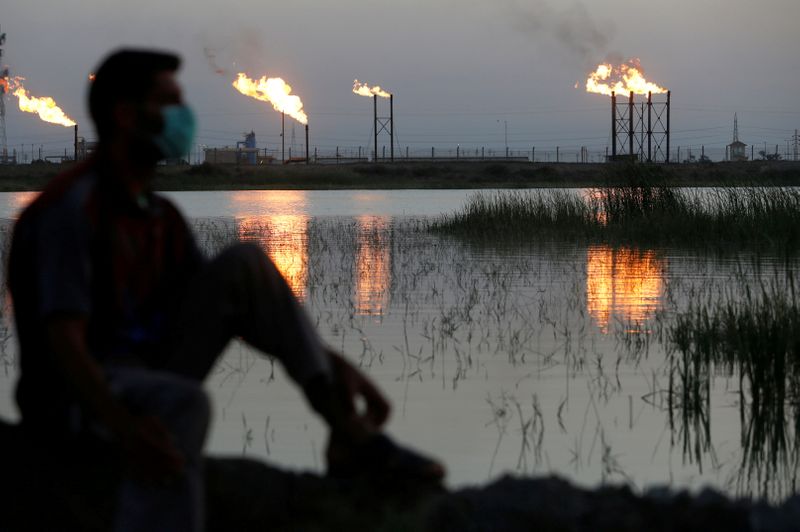NEW YORK (Reuters) – Global benchmark Brent crude prices rose 1% to their highest since early March on Thursday on renewed hopes for a U.S. stimulus deal and after major oil producers agreed to increase output by a modest 500,000 barrels per day (bpd) from January.
The increase means the Organization of the Petroleum Exporting Countries (OPEC) and Russia, a group known as OPEC+, would move to cutting production by 7.2 million bpd, or 7% of global demand from January, compared with current cuts of 7.7 million bpd.
OPEC+ had been expected to extend existing cuts until at least March, after backing down from earlier plans to boost output by 2 million bpd.
“Markets are now reacting positively and prices are recording a small increase as 500,000 (bpd) of extra supply is not deadly for balances,” said Paola Rodriguez-Masiu, senior oil markets analyst at Rystad Energy.
Brent <LCOc1> futures rose 46 cents, or 1.0%, to settle at $48.71 a barrel, while U.S. West Texas Intermediate (WTI) crude gained 36 cents, or 0.8%, to a one-week closing high of $45.64.
That is the highest settle for Brent since March 5 – before most countries imposed lockdowns to stop the spread of coronavirus.
“The market rallied to multi-month highs on demand expectations from the vaccine and stimulus, not from OPEC’s management of supply,” said Robert Yawger, director of energy futures at Mizuho.
Republicans in the U.S. Congress struck a more upbeat tone on Thursday during coronavirus aid talks as they pushed for a slim $500 billion measure that previously was rejected by Democrats who say more money is needed to address the raging pandemic.
Hopes for a speedy approval of COVID-19 vaccines spurred a rally in oil prices at the end of November – Brent soared 27% in November – several OPEC+ producers started questioning the need to keep such a tight rein on oil policy, as advocated by OPEC leader Saudi Arabia.
Higher prices also prompted U.S. producers last week to boost output for a third week in a row for the first time since May 2019. [EIA/S]
“With U.S. oil output on the rise, OPEC+ couldn’t allow the Americans to win market share at their expense,” said Edward Moya, senior market analyst at OANDA in New York.
Russian Deputy Prime Minister Alexander Novak said the group would now gather every month to decide on output policies beyond January with monthly increases not exceeding 500,000 bpd.
Monthly meetings by OPEC+ will make price moves more volatile and complicate hedging by U.S. oil producers.
“We have seen some hedging but we haven’t seen an onslaught yet. As prices go up, hedging will increase,” said Gary Ross, co-founder of BlackGold Investors.
(Reporting by Aaron Sheldrick in Tokyo and Julia Payne in London; Editing by Marguerita Choy and David Gregorio)























